Dhauli Hill whispers tales of serenity. Nestled on the banks of the Daya River, south of Bhubaneswar, this historic site is a cornerstone of India’s Buddhist heritage. Peace blankets the المكان (makan, Arabic for place) – a stark contrast to the violence it witnessed during the Kalinga War. Here, Emperor Ashoka’s transformation unfolds. His remorse led him to embrace Buddhism, and the Shanti Stupa, or Peace Pagoda, stands as a testament to his newfound devotion to non-violence and compassion.
A visit to Dhauli is a portal through time. You’ll stand where a mighty emperor chose peace over conquest, a pivotal moment etched in history. The scenic beauty adds another dimension to Dhauli’s magic. Lush landscapes intertwine with profound historical and spiritual significance. Whether you’re a history enthusiast, a spiritual seeker, or simply someone drawn to tranquility, Dhauli promises an enriching experience that will leave a lasting impression.
How to reach:
Air:
- Nearest Airport: Biju Patnaik International Airport, Bhubaneswar (10 km)
- Connects major Indian cities (Delhi, Mumbai, Kolkata, Bangalore)
- Upon Arrival: Taxi or pre-booked cab
Train:
- Nearest Railhead: Bhubaneswar Railway Station (8 km)
- Train Connections: Various parts of India (express & superfast)
- From Station: Taxi, auto-rickshaw, or bus
Road:
- Well-connected by road:
- Bhubaneswar (20-30 min): Taxi, auto-rickshaw, public bus
- Puri (45 km): Taxi, bus (1-1.5 hr)
- Buses: Frequent services from Bhubaneswar & Puri
- Odisha State Road Transport Corporation (OSRTC): Reliable & economical
- Local buses from Bhubaneswar stations (Baramunda, Master Canteen)
Best time to visit:
- Winter Wonderland (October to March): Blissful weather reigns supreme, with temperatures between 15°C and 25°C (59°F and 77°F). Explore the Peace Pagoda, Ashokan edicts, and other historical sites in ideal comfort. Take leisurely strolls and enjoy extended outdoor activities for a truly memorable visit.
- Summer Sizzle (April to June): Temperatures can climb to 40°C (104°F), making daytime sightseeing a challenge. Opt for early mornings or late evenings if visiting during this season. Stay hydrated, wear light, breathable clothes, and seek shade to avoid heat exhaustion. Despite the warmth, Dhauli’s serenity remains captivating.
- Monsoon Magic (July to September): Moderate to heavy rainfall transforms Dhauli into a lush paradise, averaging 25°C to 35°C (77°F to 95°F). This picturesque season is ideal for nature lovers and photographers. Be prepared for occasional travel disruptions due to rain, but the refreshing monsoon adds a unique charm to Dhauli.
Attractions:
Dhauli Shanti Stupa (Peace Pagoda):
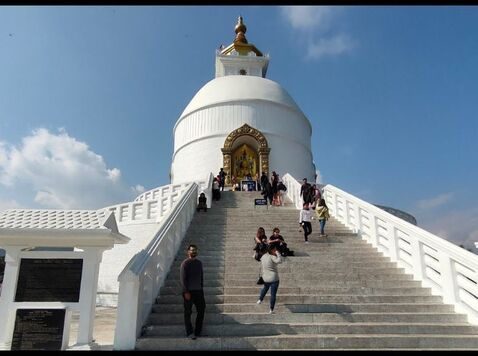
Atop Dhauli’s hills, the Dhauli Shanti Stupa, or Peace Pagoda, gleams like a beacon of tranquility. Erected in the 1970s by a joint effort of Japanese and Indian Buddhist communities, the stupa offers more than architectural splendor. Its pristine white dome is adorned with intricate carvings and statues, each whispering tales of Buddha’s journey, a silent testament to his profound teachings.
The stupa’s serene embrace beckons visitors seeking solace and reflection. A palpable spiritual energy permeates the air, further amplified by the breathtaking panorama. The Daya River winds its way through the landscape below, its gentle flow echoing the inner peace the stupa evokes. More than just a monument, the Peace Pagoda embodies the powerful transformation of Emperor Ashoka – a symbol of the everlasting Buddhist ideals of non-violence and compassion. Here, amidst the tranquility, meditation unfolds naturally, inviting you to fully absorb the spiritual energy that infuses the site.
Ashokan Rock Edicts:
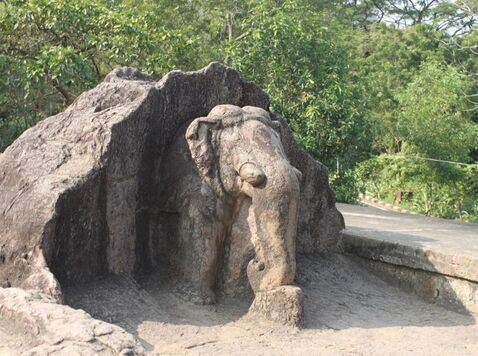
Crowned atop the verdant hills, the Dhauli Shanti Stupa, or Peace Pagoda, emanates tranquility. A testament to international Buddhist collaboration, this 1970s marvel transcends mere architecture. Its pristine white dome, a beacon against the azure sky, is adorned with intricate carvings and statues. Each whispers tales of the Buddha’s journey, silently etching his profound teachings in stone.
The stupa’s serene embrace beckons visitors seeking solace and reflection. A palpable spiritual energy permeates the air, further amplified by the breathtaking panorama. The Daya River, a gentle ribbon of life, winds its way through the landscape below. Its tranquil flow seems to echo the inner peace the stupa evokes. More than just a monument, the Peace Pagoda embodies the powerful transformation of Emperor Ashoka. It stands as a symbol, a timeless testament to the Buddhist ideals of non-violence and compassion. Here, amidst the tranquility, meditation unfolds effortlessly. Allow yourself to be fully absorbed by the spiritual energy that infuses this sacred site.
Dhauli Hills:
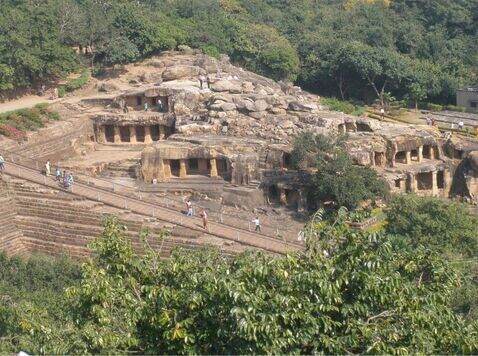
Dhauli Hills, once a stage for the thunderous Kalinga War, now resonate with a profound peace. This historic site, etched with the memory of a brutal battle that transformed Emperor Ashoka, offers a unique experience. Lush greenery graces the gentle slopes, a stark contrast to the war cries that once echoed here. The Daya River winds its way through the valley, a ribbon reflecting the tranquility that now reigns.
Dotted across the landscape are historical treasures – monuments and relics standing as silent sentinels of the past. Exploring these remnants allows you to connect with the pivotal moment that birthed an emperor’s change of heart. Dhauli Hills are a testament to the enduring power of peace, a place where the echoes of war have softened into whispers of reflection.
Daya River:
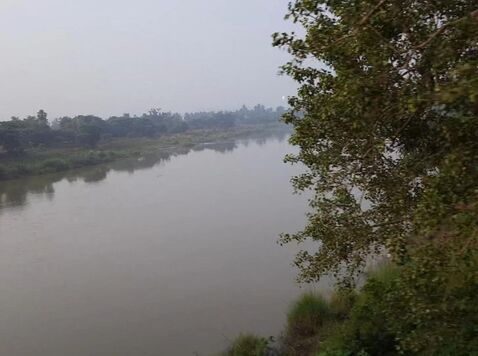
The Daya River, a gentle thread of life, winds gracefully through the Dhauli landscape. Its serene waters hold a deep historical significance. Local lore murmurs of a time when the river ran red, a consequence of the Kalinga War. This event, etched in memory, profoundly impacted Emperor Ashoka, ultimately leading him on the path of Buddhism.
Today, the Daya River stands transformed. Its tranquil flow and lush surroundings offer a haven for reflection and relaxation. Visitors can stroll along its banks, serenaded by the soft murmur of water and captivated by the peaceful vistas. The Daya River unfolds as a natural sanctuary, perfect for a picnic or simply a moment to reconnect with nature’s tranquility.
Buddhist Monastery:
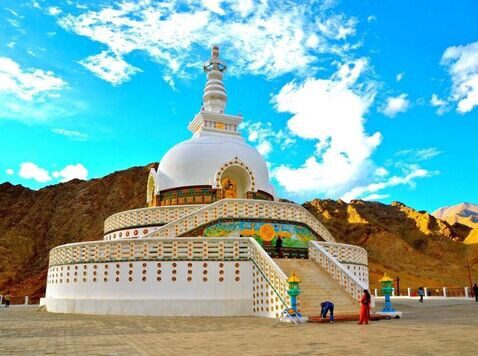
Juxtaposed with the Dhauli Shanti Stupa, a serene Buddhist monastery beckons spiritual seekers. More than peaceful grounds, this center of learning and meditation offers opportunities to interact with resident monks, participate in meditation sessions, and gain a deeper understanding of Buddhist teachings. Nestled against the picturesque Dhauli Hills, the monastery’s tranquil ambience fosters an environment ideal for spiritual growth and reflection. Here, visitors can delve into Buddhism’s history and philosophy through the monks’ guidance, enriching their experience of Dhauli’s spiritual heritage. This unique combination of serenity, spiritual guidance, and personal reflection makes the Buddhist monastery a must-visit for anyone seeking a deeper connection in Dhauli.
Sadharma Vihar Monastery:
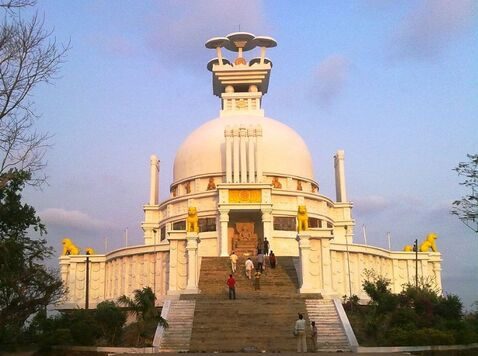
Juxtaposed with the Dhauli Shanti Stupa, the Sadharma Vihar Monastery beckons spiritual seekers. A haven of tranquility, it offers a serene environment for meditation, learning, and personal growth. Visitors can explore the peaceful grounds, engage with resident monks, and participate in teachings or meditation sessions, deepening their understanding of Buddhist philosophy. The monastery’s palpable spiritual energy fosters reflection, aligning perfectly with Dhauli’s core themes of peace, compassion, and development. This unique experience enriches any visit, making the Sadharma Vihar Monastery a must-see for those seeking a deeper connection in Dhauli.
Local Experiences:
Unleash your inner artist: Learn the intricate details and vibrant colors of Pattachitra painting in a hands-on workshop.
A timeless craft unveiled: Witness the ancient art of palm leaf engraving and even try your hand at carving your own souvenir.
Master Odia flavors: Immerse yourself in a cooking class and learn to prepare delectable Odia specialties like Pakhala Bhata, Dalma, and Chhena Poda.
Cultural kaleidoscope: Experience the vibrant heritage of Odisha through live performances of traditional dance and music.
Village whispers: Embark on a guided walk, visit local homes, and connect with villagers to discover their way of life.
Inner peace beckons: Rejuvenate with a yoga and meditation session amidst the serene beauty of Dhauli.
Woven wonders: Witness the artistry of handloom weaving, where intricate textiles are crafted using traditional techniques.
Avian encounters: Explore the diverse birdlife along the Daya River and spot a kaleidoscope of feathered beauties.
Treasure trove: Discover unique handicrafts, textiles, and souvenirs at local markets and artisan stalls.
Festival immersion: Join a vibrant village celebration and experience the joyful traditions of the local community firsthand.
Travel tips:
Prime Time: Embrace the beauty during the pleasant winters (October to March) – perfect for exploring its outdoor wonders.
Hydration Hero: Odisha’s climate can be warm and humid. Pack a water bottle and stay hydrated, especially during summer.
Dress for Comfort: Opt for lightweight, breathable clothing and comfortable shoes, particularly if you plan on exploring Dhauli Hills or the Daya River.
Respect the Culture: This place holds historical and spiritual significance. Dress modestly when visiting religious sites and be mindful of local customs.
Sun Safety First: Don’t forget sunscreen, a hat, and sunglasses to shield yourself from the sun, especially outdoors.
Cash is King: While some places accept cards, carrying cash is recommended, especially for local markets and smaller vendors.
Wildlife Wise: Be respectful of the wildlife in Dhauli Hills and the Daya River. Avoid disturbing their habitats.
Festival Fun: Check for local events or festivals during your visit. Participating offers a unique cultural experience.
Plan Your Stay: Book accommodation in advance, especially during peak tourist seasons, to secure your spot in Dhauli or nearby areas.
COVID-Conscious Travel: Before your trip, check the latest COVID-19 guidelines and travel restrictions to ensure a safe and smooth journey.
Conclusion
Unveiling the rich tapestry of India, Dhauli, Odisha, transcends time. Explore the serene Peace Pagoda and the ancient Ashokan Rock Edicts, testaments to Emperor Ashoka’s transformation and Buddhism’s enduring influence (explored in detail on Xplro.com). Hike the verdant Dhauli Hills, immerse yourself in traditional craft workshops, or be captivated by the vibrant local culture – Dhauli promises an enriching experience for every soul. Wander through historical monuments, connect with friendly locals, and soak in the spiritual ambiance. Discover a place where peace, wisdom, and timeless beauty resonate. A visit to Dhauli isn’t just a journey through history; it’s a path of self-discovery, reflection, and connecting with the essence of India’s cultural tapestry.
FAQs
What is Dhauli, and where is it located?
- Dhauli is a historical site situated on the banks of the Daya River, just south of Bhubaneswar, the capital city of Odisha, India.
What is the significance of Dhauli?
- Dhauli holds significance due to its association with Emperor Ashoka and the pivotal Kalinga War, which led to his adoption of Buddhism and advocacy for non-violence.
What are the main attractions in Dhauli?
- Key attractions include the Shanti Stupa (Peace Pagoda), Ashokan Rock Edicts, Dhauli Hills, Daya River, and the Buddhist Monastery.
How can I reach Dhauli?
- Dhauli is accessible by air via Biju Patnaik International Airport in Bhubaneswar, by rail through Bhubaneswar Railway Station, and by road with regular bus services from Bhubaneswar and neighboring cities.
What is the suggested time to visit Dhauli?
- The suggested time to visit Dhauli is during the winter months (October to March) when the weather is pleasant and conducive to sightseeing.
Is there an entry fee to visit Dhauli?
- No, entry to Dhauli is free of charge for all visitors.
Are there accommodations available in Dhauli?
- While lodging options in Dhauli are limited, visitors can find various hotels, guesthouses, and resorts in nearby Bhubaneswar.
What are some experiences to enjoy in Dhauli?
- Some experiences include Pattachitra painting workshops, palm leaf engraving demonstrations, cooking classes featuring traditional Odia cuisine, cultural performances, village walks, and yoga sessions.
Can I visit Dhauli with children?
- Yes, this is suitable for visitors of all ages, including children, but parental supervision is advised, especially near riverbanks and historical sites.
Is photography allowed in Dhauli?
- Yes, photography is generally permitted in here, though visitors should respect any posted restrictions or guidelines.
Are there dining options available in Dhauli?
- While dining choices are limited, nearby Bhubaneswar offers various restaurants serving a range of cuisines, including Odia dishes.
Is Dhauli wheelchair accessible?
- Efforts have been made to improve accessibility, but some areas, such as hilltops and natural trails, may pose challenges. However, main attractions like the Peace Pagoda and Ashokan Rock Edicts are accessible to visitors with mobility concerns.





